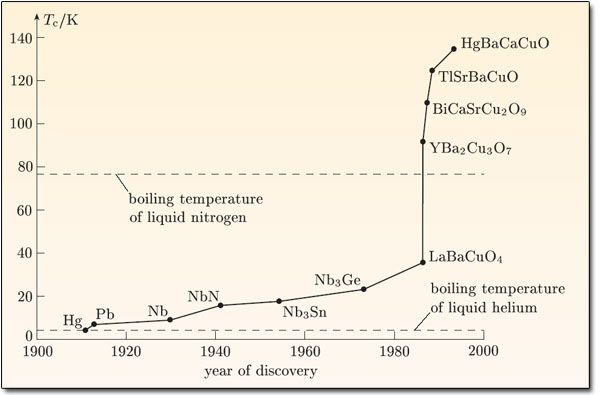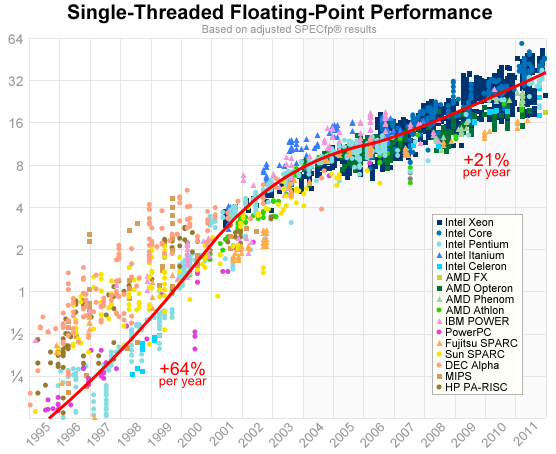There's a real danger with extrapolation when it comes to physics. If you look at that graph, you can hypothesize that at some point, we might find a compound that superconducts above 270k. Extrapolation puts it around the year 2100 or so but still. Living in an age of computing certainly encourages this thinking. After all, pretty soon anything will be possible. Unfortunately reality sets in and theory hits 7nm die sizes and all of a sudden stuff starts getting harder because electronics are no longer electronics, they're quantum devices. 5nm was supposed to be out next year; it probably won't be now. And things get even harder beyond there as 5nm means you're dealing with quantum tunneling and your chip isn't acting like it should anymore. Thermodynamics is hard and fast - energy is neither created nor destroyed. That's the first law. Einstein's special relativity gave us causality which was seen as so fundamental they gave it the second law - time is asymmetrical. Instantaneous information transfer violates causality. It invokes symmetrical time. Much like electronics cease to be electronics below 5nm, quantum superposition ceases to be information through the simple act of performing it. No amount of physical refinement will allow you to build a perpetual motion machine, no matter how efficient things get. So it's a lovely dream. But it isn't a "we can solve this if we work harder" problem it's a "everything we know about physics indicates we will never solve this" problem.

